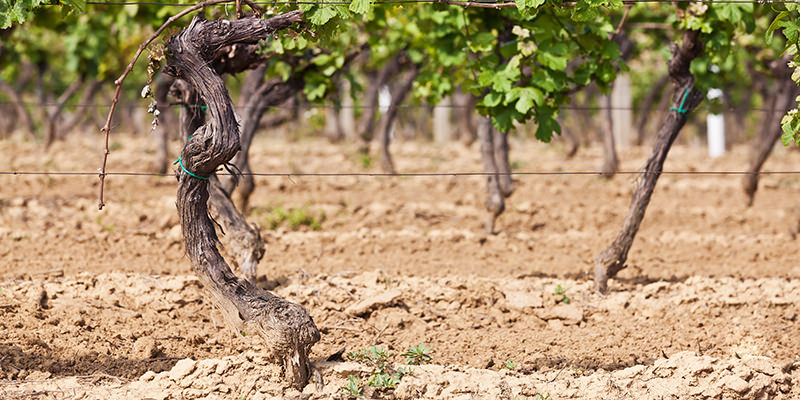It’s very romantic—the idea of a struggling, scrappy grapevine triumphing over agricultural adversity to make an amazing wine (roll credits). But why does it work that way? Why do we need slate and sand and clay and rocky, precipitous hillsides to produce wines of character? Can’t a grape vine just kick back in some decent soil and grow well-rested, plump little berries?
Sure it can. But not if you want good wine.
It all comes down to a plant’s needs. Take wheat, for comparison. Grape vines are very good at growing, so much so that they can survive tougher soils where other (and, to be fair, more essential) crops like wheat would struggle. To develop properly, and produce the most economical yields, wheat needs a balance of stuff like lime, nitrogen, phosphorous, and proportional drainage. And we’re glad to manage it, because we like bread (and beer). Not only are grape vines heartier, but our goals for them are different: with wheat, we want plenty, with wine grapes, we want quality. (Though, sure, plenty would be fine, too.)
There are a few reasons bad soil yields higher quality grapes. In poor soil, roots have to work harder, “ramifying,” or branching off, to gather nutrients. Not only does this increase the surface area of root-to-soil—meaning more nutrients ultimately get to the grape—but it also helps regulate water absorption. If a vine has too easy access to the water table, it won’t grow as many roots and it’ll, well, drink too much (we’ve all been there). The result: plenty of fat, characterless grapes. Anyone who’s tasted a giant, watery strawberry or a two-dimensional fist-sized apple knows that ultra-juicy fruit doesn’t necessarily mean flavor.
Water management is actually key, and part of the reason soils that don’t retain as much water often work better for grape vines. Whatever the quality of the soil, there’s one unifying “must” for all good vineyards: drainage. Rockier soils actually have better drainage—as do slopes (think about all the images of rolling, hilly vineyards you’ve seen).
Then there are the internal actions of the plant itself. Think of it this way: when you do all the work for the plant, the plant ends up doing less work itself. Like an over-managed kid, with helicopter mom always standing at the ready to wipe his nose or confiscate his cell phone, the coddled vine does less of its own developing.
Imagine that kid wants to live at home, dabble in veganism, and take snow-boarding lessons, except mom kicks him out, so he goes on a journey of hard work and self-discovery and writes an award-winning novella. Just like that kid, when a grape vine has to struggle, it reprioritizes to everyone’s benefit: instead of creating a beautiful but undrinkable canopy of green leaves, all the energy goes into root production (the roots are like nutrient scavengers, they’ll travel far and wide to find food) and then the grapes themselves. Some leaves are needed of course for photosynthesis, but there’s an efficiency ratio at work—just enough photosynthesis to produce sucrose (sugar), which is sent to the grapes.
This is where things get pretty cool. If you’re a struggling vine, why spend so much time sending sugar to a few measly grapes? Because birds. Yeah, in one of nature’s neater hat tricks, a struggling vine still instinctively “knows” its best chances for reproduction are the grapes themselves. And even if it doesn’t have as many grapes for birds to eat, it has delicious, nutrient-rich grapes. Which, ideally, we get to before the birds.

